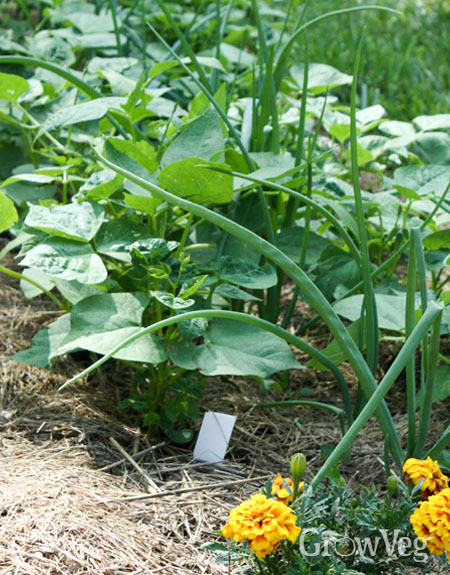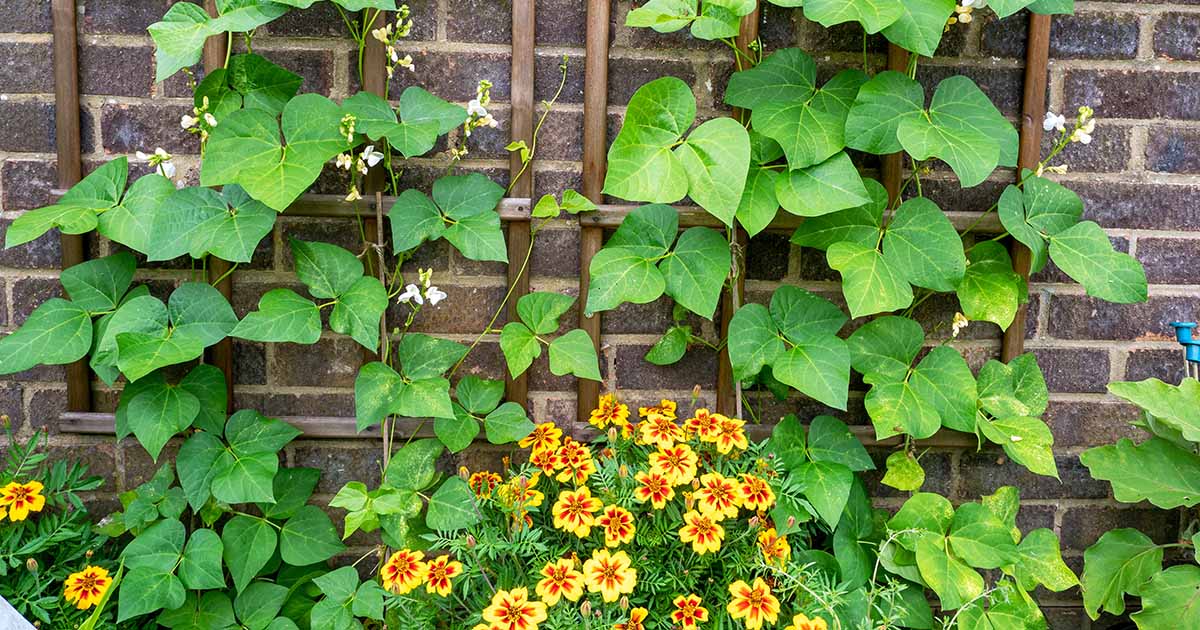The Ultimate Guide To Companion Planting With Green Beans
The Ultimate Guide to Companion Planting with Green Beans
Green beans are a popular and versatile vegetable that can be grown in many different climates. They are also relatively easy to care for, making them a great choice for beginner gardeners.
One way to improve the growth and yield of your green bean plants is to practice companion planting. Companion planting is the practice of planting certain types of plants together in order to create beneficial relationships between them.
There are many different plants that can be companion planted with green beans. Some of the best include:
- Corn: Corn is a good companion plant for green beans because it provides shade and support for the bean plants. The corn also helps to attract beneficial insects, such as ladybugs and hoverflies, which help to control pests.

- Cucumbers: Cucumbers and green beans are both members of the cucurbit family, and they benefit from being planted together. The cucumbers help to suppress weeds, and the green beans help to provide support for the cucumbers.

- Marigolds: Marigolds are a popular companion plant for many different vegetables, and they are no exception when it comes to green beans. Marigolds help to repel pests, such as Mexican bean beetles and aphids.

- Nasturtiums: Nasturtiums are another great companion plant for green beans. They help to repel pests, such as aphids and whiteflies. Nasturtiums also attract beneficial insects, such as ladybugs and hoverflies.

- Potatoes: Potatoes and green beans have a mutually beneficial relationship. The potatoes help to repel the Colorado potato beetle, which is a common pest of green beans. The green beans, in turn, help to fix nitrogen in the soil, which benefits the potatoes.

- Spinach: Spinach is a good companion plant for green beans because it helps to suppress weeds. Spinach also helps to improve the flavor of the green beans.

In addition to these plants, there are many other that can be companion planted with green beans. When choosing companion plants, it is important to consider the needs of both plants. For example, you should not plant green beans near plants that require a lot of water, as this could lead to root rot.
You should also avoid planting green beans near plants that are susceptible to the same pests and diseases. For example, you should not plant green beans near potatoes, as both plants are susceptible to the Colorado potato beetle.
By following these tips, you can create a successful companion planting arrangement for your green beans. This will help to improve the growth and yield of your plants, and it will also help to keep pests and diseases at bay.
Green beans are a delicious and versatile vegetable that can be enjoyed in many different dishes. But did you know that companion planting can help you grow healthier and more productive green beans?
Companion planting is the practice of planting different types of plants together in order to benefit each other. There are many different companion plants that can be beneficial for green beans, including:
- Basil: Basil is a natural insect repellent that can help to protect your green beans from pests like aphids and beetles.
- Cucumbers: Cucumbers and green beans are both heavy feeders, so they can benefit from being planted together. The cucumbers will help to shade the roots of the green beans, while the green beans will help to fix nitrogen in the soil for the cucumbers.
- Eggplants: Eggplants and green beans are both resistant to the same pests, so planting them together can help to deter insect problems.
- Marigolds: Marigolds are another natural insect repellent that can be beneficial for green beans. They also help to improve the soil quality and attract pollinators.
- Nasturtiums: Nasturtiums are a trap crop that can help to attract pests away from your green beans. They are also edible and can be used in salads or sandwiches.
If you're interested in learning more about companion planting with green beans, I recommend visiting the website Garden Wiki. This website has a wealth of information on the topic, including a list of recommended companion plants, tips for planting and caring for green beans, and more.
Image of companion planting with green beans
- Image 1: Green beans and tomatoes. Tomatoes are a good companion plant for green beans because they help to deter pests. The strong smell of tomatoes can help to keep away insects like aphids and whiteflies.
- Image 2: Green beans and carrots. Carrots help to improve the soil quality for green beans. They release a compound called umbelliferone, which helps to suppress the growth of harmful soil-borne fungi.
- Image 3: Green beans and lettuce. Lettuce provides shade for the roots of green beans, which helps to keep them cool and moist. Lettuce also helps to attract beneficial insects, such as ladybugs and lacewings, which prey on pests that can harm green beans.

- Image 4: Green beans and marigolds. Marigolds are a good companion plant for green beans because they help to repel pests. The strong smell of marigolds can help to keep away insects like aphids, beetles, and nematodes.

- Image 5: Green beans and nasturtiums. Nasturtiums are another good companion plant for green beans because they help to deter pests. The leaves and flowers of nasturtiums contain a compound called nasturtiumin, which has insecticidal properties.

Post a Comment for "The Ultimate Guide To Companion Planting With Green Beans"